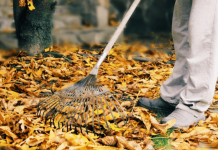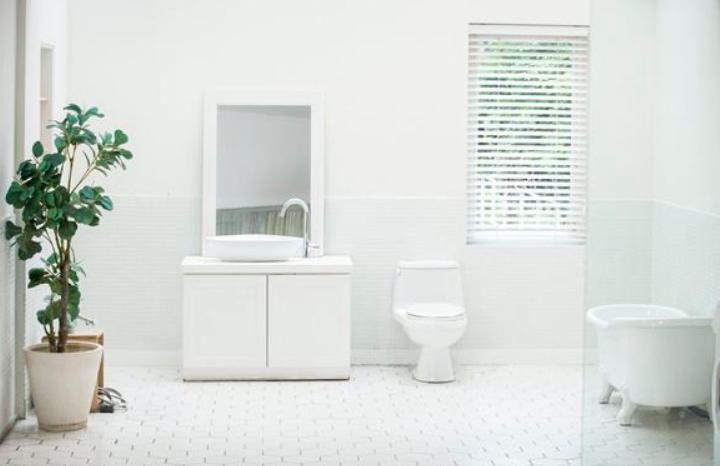Succulent plants
Succulents are the most useful plants for indoor gardeners. They are wild, beautiful, cheerful and have a variety of foliage. Aloe is one of the most popular succulents grown for cosmetic and health purposes. Desert rose is a vibrant plant with beautiful flowers. But beware of the sap, which can be corrosive.
Succulents are a large group of plants that consist of special cells capable of storing water in large quantities. From the Latin, the term “succulentus” translates as “succulent”, which is quite appropriate for such plants.
The group of succulents includes many different varieties, which are often not even related to each other by kinship ties or a common origin. And their external similarity is due to the same climatic conditions of growth – rocky terrain and arid weather.
According to the principle of water accumulation, succulents are divided into species – leaf and stem. The first type of succulents accumulates moisture in voluminous leaves. The most famous representatives are aloe, hawortia, kalanchoe and rejuvenile.
The second kind is able to absorb moisture with its ribbed and slightly thickened stem. Leaflets of stem succulents are often small not thickened or even turned into sharp prickles. The stems are densely covered with tufts or small prickles, which protect the plants from being eaten by animals in their natural habitat – the deserts of the Americas or the dry regions of Africa. The most famous among stem succulents are most members of the Cactus family – Carnegia, Monzolia, Cereus, as well as Lithops (stone flowers).
A succulent

Many fans have appeared to create entire flowerbeds from these now no longer southern plants. Many species of succulents can tolerate low temperatures down to -30 degrees. All of them are undemanding, and if you know some rules, you can enjoy unique – beautiful blooming of cacti in your garden.
So find a sunny place without seasonal waterlogging. The flowerbed for these exotic plants is fenced with brick masonry, thus creating a microclimate for succulents and protecting them from weeds. The masonry should protrude above the plot level by 40 cm. From the place of planting the soil is selected to a depth of 20 cm, poured drainage layer, at least 30 cm. and on top of 30 cm. soil for cacti.
Some especially cold-resistant specimens are planted directly in this soil, some more thermophilic ones – in pots, which are dug out for the winter. In the center of the composition, it is best to plant the tallest plant, and around – the lower ones. You choose the frequency of planting based on the growth capabilities of the succulent – whether they grow tall or wide. It is very important to cover the top with a drainage of expanded clay, or marble chips, or pebbles. This will protect the cacti from excess moisture and lack of it, especially in the summer. In general all succulents like water and in summer they need to be watered every day, but carefully. When it gets colder, watering is reduced. In winter they are not watered at all, succulents live several months without watering, spending what they have accumulated during the hot season.
Cacti are very fond of feeding, especially during flowering and growth. All succulents are fed with special fertilizers, alternating them with complex mineral fertilizers.
Growing Aloe

Aloe is one of the most popular succulents grown because of its cosmetic properties and health benefits.
Some species have medicinal properties, so they are used in alternative medicine. Aloe juice helps cure pustules and burns faster. It is also used to make masks because it has regenerating and rejuvenating properties. The leaves are used to produce a substance that has a laxative effect. Not only are there many species of aloe grown in culture, but also many varieties.
- Flowering. Aloe is grown as an ornamental and medicinal plant.
- Lighting. Needs brighter sunlight. Sometimes in the winter time it is recommended to additional light the bush.
- Temperature regime. In the spring and summer period the flower grows well at normal room temperature. In winter, the room temperature should not be warmer than 14 degrees.
- Watering. During the growing season, the substrate in the pot is moistened immediately after the drying of its top layer. During the winter months watering is carried out less frequently, and more precisely, two days after the drying of the surface of the soil mixture. During watering, it is necessary to ensure that the liquid does not get inside the rosette of leaves.
- Air Humidity. Aloe grows normally if the air humidity is typical for living spaces.
Growing the desert rose (Adenium obesum)

Desert Rose is a vibrant plant with beautiful flowers. But beware of the sap, which can be corrosive.
The desert rose (Adenium obesum) is a slow-growing plant with a thick succulent stem and dark pink flowers. It belongs to the genus Apocynaceae, which grows in Africa, the Middle East and Madagascar. Desert rose is the only cultivated adenium, although it has undergone extensive hybridization to produce different colors (such as orange and striped).
In many countries with tropical and warm climates, it is a favorite ornamental plant for the outdoors, and in other parts of the country it adds color to interiors. It is best planted in spring and in cooler winters in October, leaving it in its leaves to insulate for the winter. Overall, this variety is quite easy to care for, and it pays off very well with its blooming beauty.
Before planting the seeds of adenium at home, first lay a layer of drainage in the bottom of the container. On top of it, pour wet substrate, which is leveled, but not compacted.
- Temperature. The desert rose should be kept constantly warm – it will quickly die if it stays below +10 degrees Celsius for a long time, and grows best at temperatures between +18 and +32 degrees Celsius.
- Humidity. The desert rose plant has different water needs, depending on the time of year and temperature.
- Fertilization. For more nutrients (and a chance to get more flowers after flowering), you can feed your desert rose with liquid fertilizer (diluted by half) once a month during its active growth.
- Propagation. Desert rose can be propagated by cuttings, but the plants often do not develop the characteristic (and very desirable) bulbous stem.
Growing Sedum Morganianum (Donkey’s tail)

This beautiful succulent is a dangling plant with drop-shaped leaves that form a long prominent “tail.”
Sedum morgana is a southern flower, accordingly, it needs a lot of solar energy to grow. Therefore, the pot with the plant is best placed on the window sill facing south. In summer, the sedum should be in the fresh air. If natural light is not enough, you should use an additional source of light, because with a lack of light the leaves of the plant will cease to be elastic, the shoots will elongate and become thin, losing their decorative beauty.
An extremely beautiful, perennial, unpretentious plant. It is often grown as an ampel plant. Its dangling branches, densely studded with white-blue leaves, resemble bunches of grapes. The leaves are covered with a white waxy patina that protects them from sunburn, pests and diseases.
- Sunlight. Grows best in filtered bright light to accentuate the color of the leaves.
- Watering. In summer, water moderately, but regularly, after the top layer of soil has dried to a depth of 1.5 cm. In case of insufficient watering, the leaves will shrivel up and fall off. Excess moisture causes rotting. In winter, watering is reduced to 1-2 times a month, slightly moistening the top layer of soil. With more intensive watering, the branches will begin to grow and elongate, which will spoil the appearance.
- Propagation. Propagation is very simple – by cuttings of individual branches and leaf cuttings.
- Transplanting. If your plant is sitting in a pot, the growth of its tails will slow down. You can check the roots by removing the plant from the pot. If you see a mass of roots, it’s time to transplant the plant into the pot.
Growing echeveria

One popular variety, succulents echeveria, grows as climbing roses with overlapping leaves. They are wonderful indoor plants: they are beautiful, compact and easy to care for.
Echeveria needs fresh air, so it is recommended to take the plant to a balcony or open veranda. If this is not possible, it is recommended to ventilate the room as often as possible.
Spring-summer is the phase of active growth of echeveria. During this period, the optimal holding temperature should be 22-28 ° C. Higher temperatures are also not terrible for succulents. In the winter period (from October to February) comes a state of dormancy. The recommended temperature is 8-10 ° C. Some species of echeveria bloom in winter as well. Such plants should not be moved to a poorly heated room, but left in a warm living room.
- Watering. In spring and summer echeveria requires abundant and frequent watering, in winter – moderate and rare.
- Feeding. is made with fertilizer for succulents or cacti monthly during active growth (spring-summer).
- Propagation. Happens in different ways. By seeds, cuttings.
Echeveria brings home not only beauty: this plant has a good effect on the composition of the air in the room, helping to enrich it with ozone, oxygen and aeroions, although for the effect to be felt, it needs a lot of such plants. It is believed that echeveria helps to create an atmosphere of calm and harmony in the home.
The leaves of echeveria have a disinfectant effect and can be useful for boils, burns and scratches. The juice and parts of the plant are used in folk medicine.






